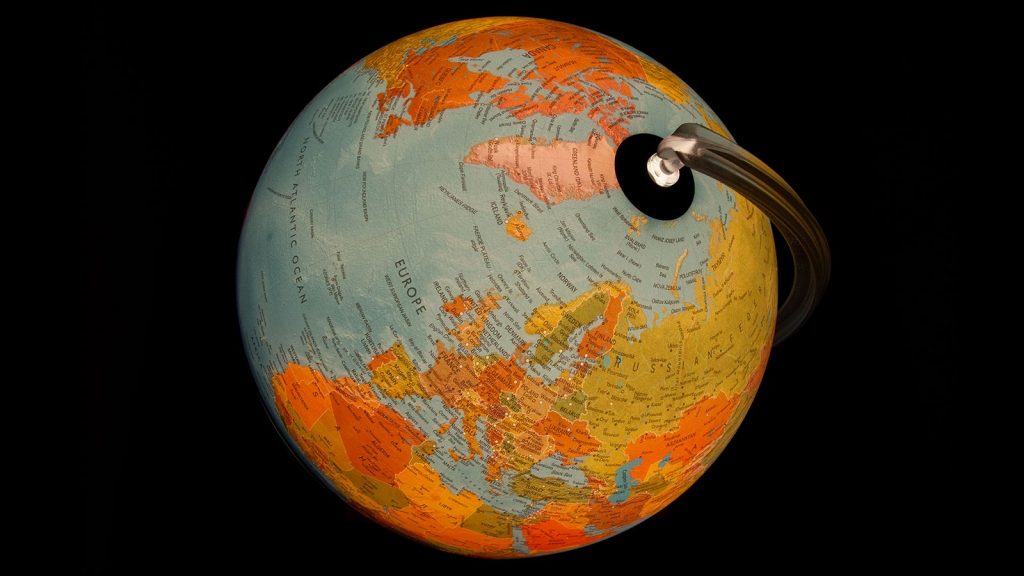
Severity of multiple sclerosis (MS) was linked with geographic latitude, an observational study showed.
Among 46,000 MS patients living in temperate zones, more severe disease was seen in those who lived above 40° latitude, reported Tomas Kalincik, MD, PhD, of the University of Melbourne, Australia, and co-authors.
The association was driven mainly, but not exclusively, by ultraviolet B (UVB) radiation exposure contributing to both MS susceptibility and severity, the researchers wrote in Neurology.
“It is a known fact that multiple sclerosis is more prevalent in higher latitudes,” Kalincik told MedPage Today. “In this study, we’ve shown that the severity of the disease also follows a similar pattern.”
“People living with multiple sclerosis in Scandinavia, for instance, are more likely to experience faster decline in their neurological function than people living in the Mediterranean, after we factor in differences in disease prevalence and access to therapy,” he noted.
“This association seems to be established during the early years of life,” Kalincik added. “We do not yet know what is behind this phenomenon. The candidates are many, ranging from environmental exposures including exposure to UV radiation from the sun, diet, or genes.”
An intriguing aspect of MS epidemiology is the long-standing observation that disease prevalence is lowest in equatorial regions and rises towards the poles, a phenomenon known as the latitude gradient, noted Patrick Ostkamp, PhD, and Nicholas Schwab, PhD, both of University of Muenster in Germany, in an accompanying editorial.
“It is widely accepted that insufficient sunlight exposure is a risk factor to develop MS,” Ostkamp and Schwab wrote. “For practitioners and patients, it is therefore of interest whether sunlight and/or vitamin D could also be exploited therapeutically.”
“Short-wave radiation, especially ultraviolet B, is assumed to mediate the anti-inflammatory effects of sunlight, which is why it is routinely applied in dermatological contexts, e.g., in autoimmune skin conditions such as psoriasis and vitiligo,” they added. “If UVB light would prove to be beneficial in MS, this could provide new therapeutic avenues.”
Kalincik and co-authors assessed geographic and clinical data from 46,128 MS patients at study centers participating in the global MSBase registry. Patients met 2005 or 2010 McDonald diagnostic criteria for MS.
The researchers determined the latitude and calculated the cumulative annualized UVB dose at each study center for patients at age 6 and 18 and at the year of disability assessment, using satellite-derived UVB data from the NASA Total Ozone Mapping Spectrometer (TOMS). TOMS data account for cloud conditions, ozone thickness, length of day, solar zenith angle, and surface albedo.
Disease severity was assessed using the Expanded Disability Status Scale (EDSS) and converted into the Multiple Sclerosis Severity Score (MSSS) to compare disability at different times from disease onset.
Most patients (70%) were women. Mean age was 39, and mean MSSS was 2.9. Patients resided between latitudes 19°35 ́ and 56°16 ́. Findings were adjusted for sex, age at MS onset, disease phenotype, hemisphere of study center, prevalence of MS in the country of residence, and proportions of cases on any disease-modifying treatment and high-efficacy treatment per center.
In latitudes greater than 40°, disease severity was greater with higher latitudes (β=0.08, 95% CI 0.04-0.12); this translated into a mean difference of 1.3 points in MSSS between patients living in Madrid and Copenhagen, for example. This relationship was not seen in latitudes lower than than 40°.
High disability correlated with low cumulative UVB exposure at the time of disability assessment and with cumulative exposure before ages 6 and 18. The pattern was consistent between the Northern and the Southern hemispheres.
“On average, MSSS decreases by 1.0-1.2 deciles for each 1 kJ/m2 increase in annual UVB dose,” Kalincik and co-authors wrote. “Interestingly, these associations, even though of a relatively smaller magnitude, are already present at 6 and 18 years of age with respect to all future MSSS scores. This suggests that exposure to UVB during the early stages of life may be critical for defining future severity of the disease.”
The association of latitude with MS severity was partly independent from estimated UVB exposure, suggesting other variables may underpin the relationship as well, the researchers added.
“Most notably, UVB exposure is modified by behavioral factors, which are in turn determined by a patients’ disability, comorbidities, and cultural factors,” they noted. “Epstein-Barr virus (EBV) is another potential candidate determinant. EBV seroprevalence is substantially greater in higher latitudes in both patients with MS and healthy controls.”
The study was based on a large cohort and results cannot be translated into predictions of individual outcomes, Kalincik and colleagues noted. In addition, lifetime UVB exposure did not account for individual behaviors like occupation, intentional sun exposure, sunscreen use, or cultural habits. The researchers also did not have information about other possible MS confounders like BMI or history of EBV infection.
-
Judy George covers neurology and neuroscience news for MedPage Today, writing about brain aging, Alzheimer’s, dementia, MS, rare diseases, epilepsy, autism, headache, stroke, Parkinson’s, ALS, concussion, CTE, sleep, pain, and more. Follow
Disclosures
This study was supported by the National Health and Medical Research Council of Australia.
The researchers reported relationships with Actelion, Almirall, Bayer, Biogen, Celgene, Genzyme-Sanofi, Merck/EMD, Mitsubishi, Novartis, ONO Pharmaceuticals, Roche, Teva, WebMD, Mylan, Fondazione Italiana Sclerosi Multipla, Czech Ministry of Education, GSK, MS Society of Canada, and CSL Australia.
The editorialists reported relationships with Novartis, Roche, and Biogen.
